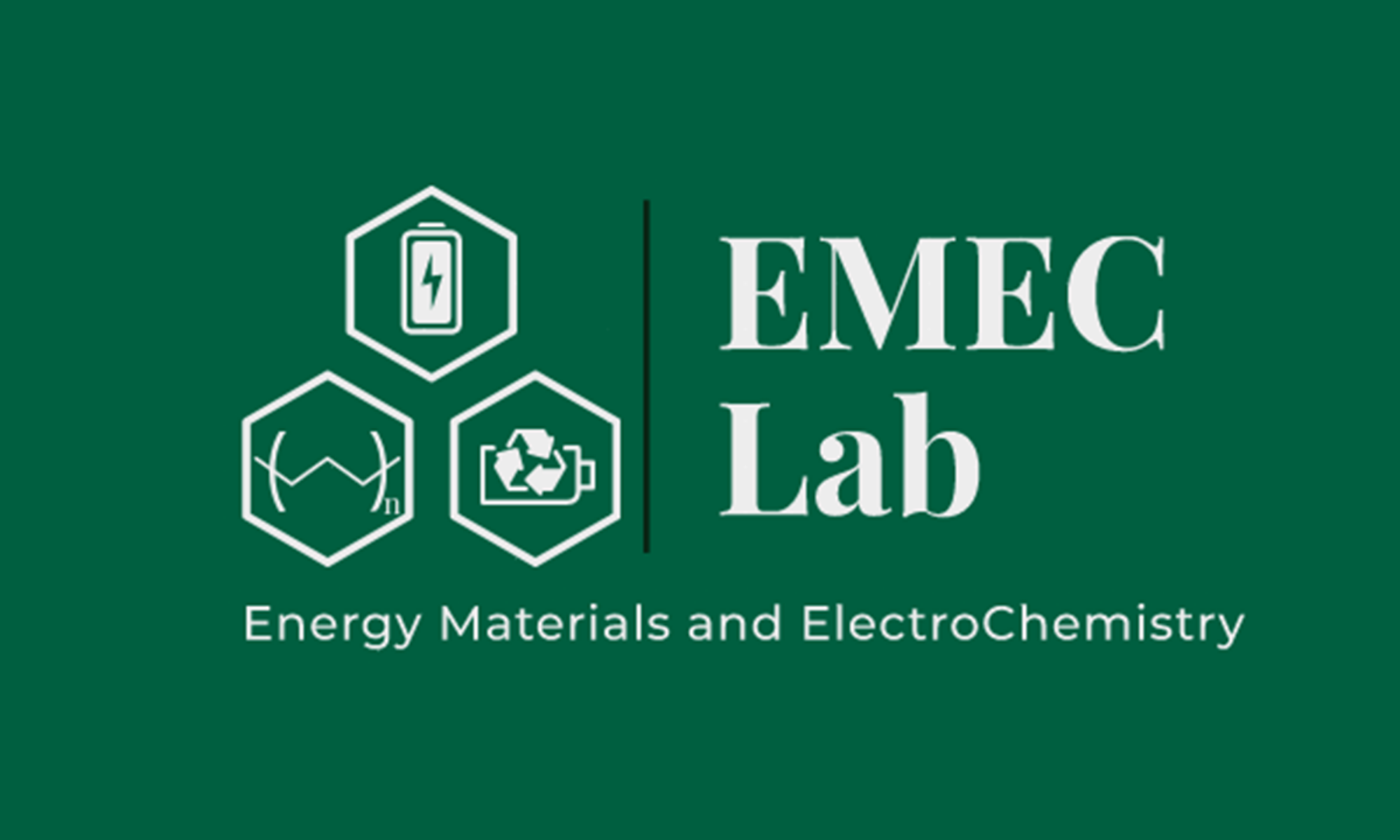Self-healing strategies for batteries
Binders
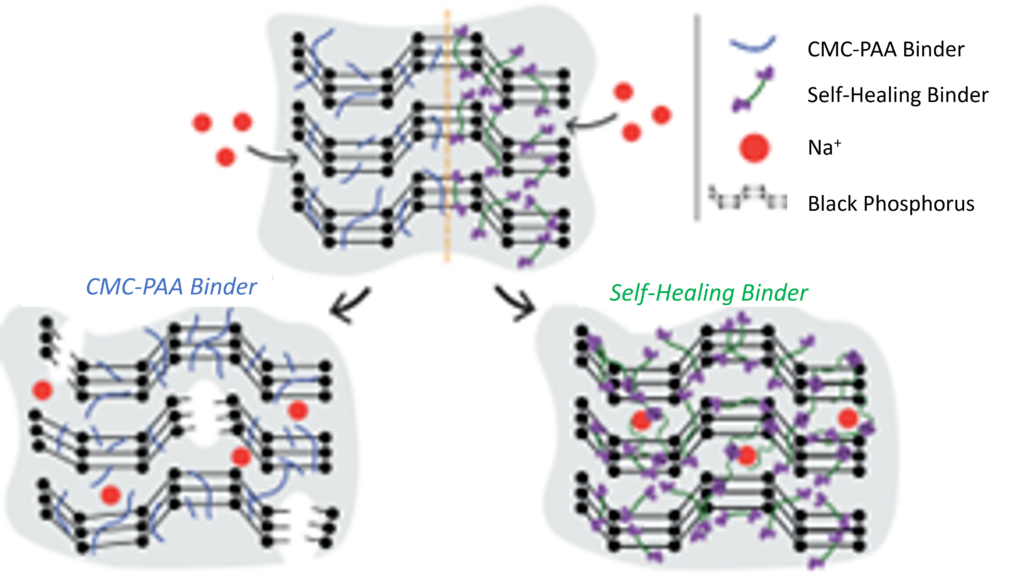
The future next generation metal (M)-ion batteries, (M= Li LIBs and Na SIBs), need to be improved in terms of enhanced durability, lower cost per stored energy and sustainability. Some of the most crucial issues which are detrimental on the battery performances are related to the physical-chemistry of the electroactive materials selected as anode components. Autonomic self-healing (SH), namely the ability to repair damages from mechanical stress spontaneously, is highly attractive to enhance the durability and safety of rechargeable Li- (LIB) or Na-ion (SIB) batteries, where high-performing anode active materials (Silicon, Phosphorus, etc.) are strongly affected by volume expansion and phase changes upon ion insertion. We adopt self-healing supramolecular strategies for the synthesis of novel binders, properly designed to be multifunctional and capable to self-recover at room temperature in absence of external stimuli. The result is better adhesion to the current collector, buffering properties and spontaneous damage reparation.
Separators
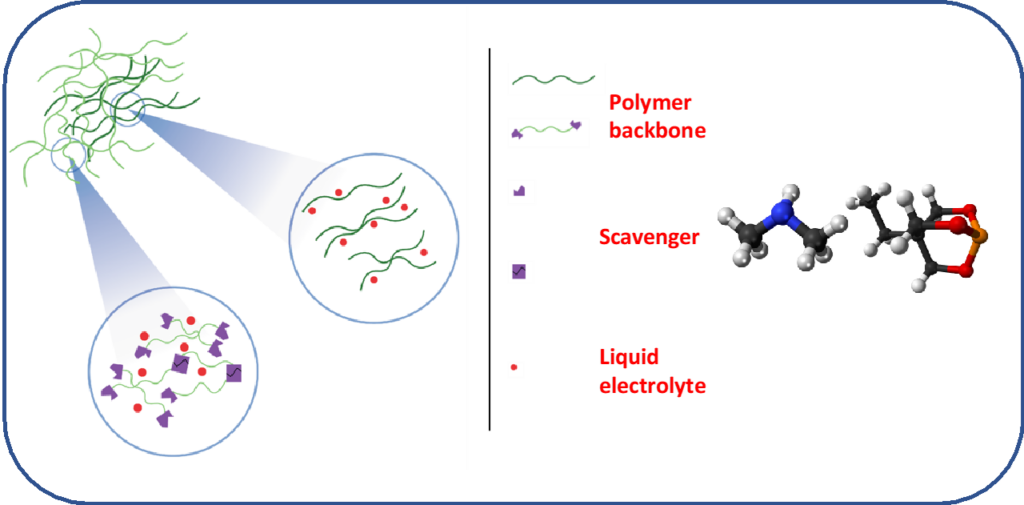
The presence of reactive impurities in the liquid electrolyte eventually present in the liquid electrolyte or coming from decomposition reactions involving the cathode active materials (e.g. NMC) is crucial for the battery long-term stability and safety. They induce undesirable events leading to performances decay, such as, the dissolution of the transition metals from the cathode, porosity evolution, uncontrolled SEI growth and gas evolution (as PF3/PF5, O2 or CO2) with consequent dangerous pressure increase inside the cell. Our strategy is focused on the development of novel separators properly functionalised with molecular scavengers, capable to eliminate or deactivate reactive substances generated by the degradation of LiPF6-containing electrolytes in Li-ion batteries, thus offering a wider range of electrolyte formulation opportunities. Molecular scavengers may be developed with high selectivity and affinity toward unwanted species, such as HF, H2O and O2 in order to mitigate the problem of electrolyte instability that commonly results in battery performances degradation and shorter lifetime.
Design of electrolytes for lithium and post-lithium batteries

More powerful, durable, safer, greener and cheaper batteries are needed to fulfil the compelling requirements of automotive and grid applications. Addressing most of these requirements passes through the development of new-generation electrolytes able to overcome the issues of the state-of-the-art liquid ones, which are based on highly volatile and flammable organic solvents. At the same time, the quest for new electrolytes is strictly related to the attempt of replacing the graphite anode with lithium metal, so opening the way to full exploitation of new post-lithium chemistries. We explore new routes for the development of quasi-solid electrolytes, as polymer-in-solvent or meso/microporous systems (ceramics/MOF) for liquid nanoconfinement, with improved performances in terms of safety, chemical and electrochemical stability, and capability to sustain high current densities. Attention is devoted to the problem of lithium dendrites formation, and to the electrolyte families able to eliminate/control their development.
Anode and cathode materials for Li-ion and post-lithium
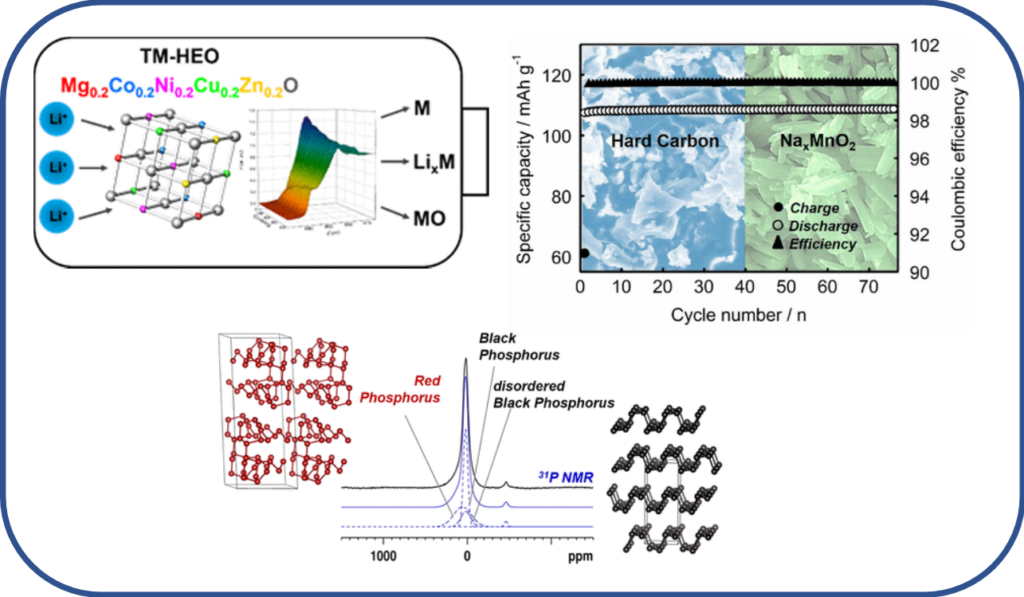
Regarding the cathode component, many materials have been explored, from Li olivines to silicates and high-voltage cathodes. The anode materials regard for instance Black Phosphorus and bulky or nanoarchitectures based on ZnO or High Entropy oxides and related materials in different morphologies. In both cases, the active materials have been synthetized by different methods, namely solid-state reactions, hydrothermal, sol-gel processes, soft lithography, in order to optimize the morphological features and, consequently, the electrochemical behavior.
Additive Manufacturing (3D printing) of batteries
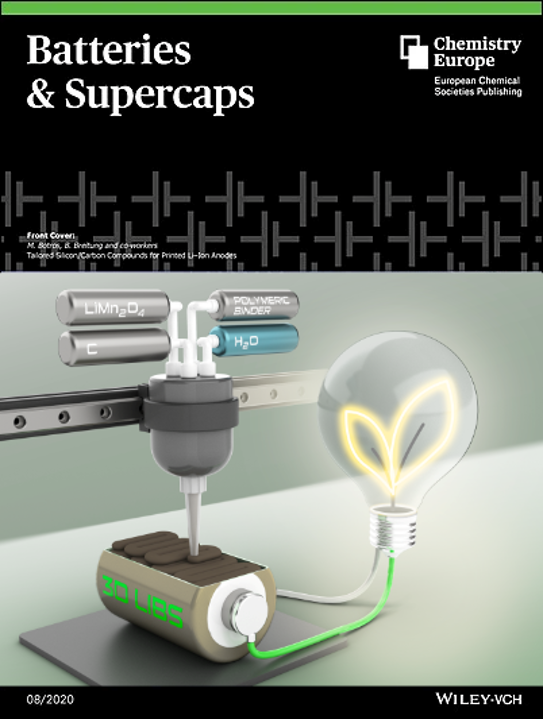
Additive manufacturing (AM) is a very promising and sustainable manufacturing solution, easily scalable to fabricate all solid-state batteries (ASSBs). It also enables to build structurally complex electrodes with well-controlled geometry, shape and thickness. We are developing 3D printing methods of battery components based on robocasting AM via aqueous processing. Such a technology is: i) environmentally friendly, since it works well with water and green binders; ii) fast, due to very short deposition times and rapid drying process because of low amount of solvent in the printable pastes; iii) easily scalable.
